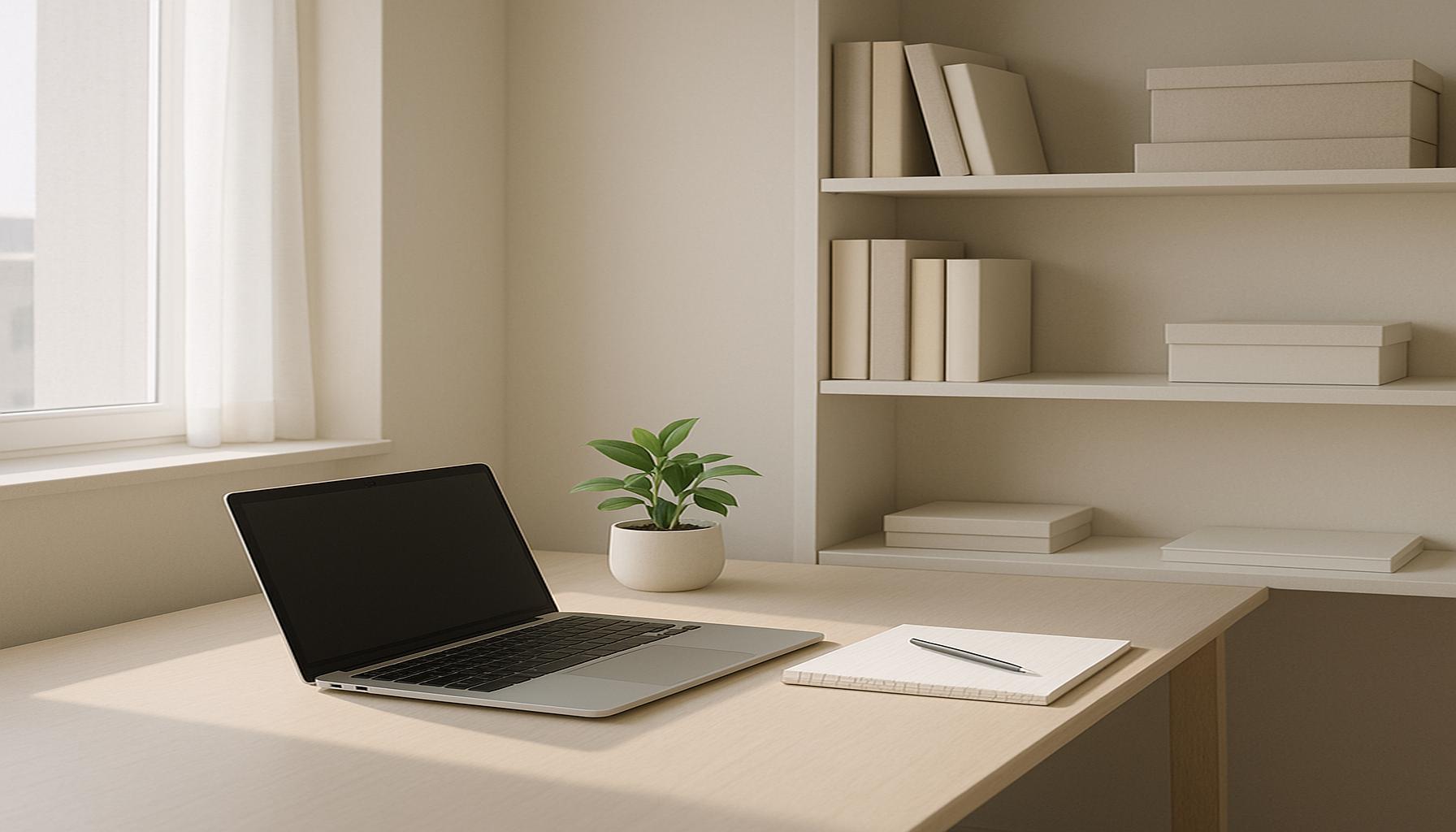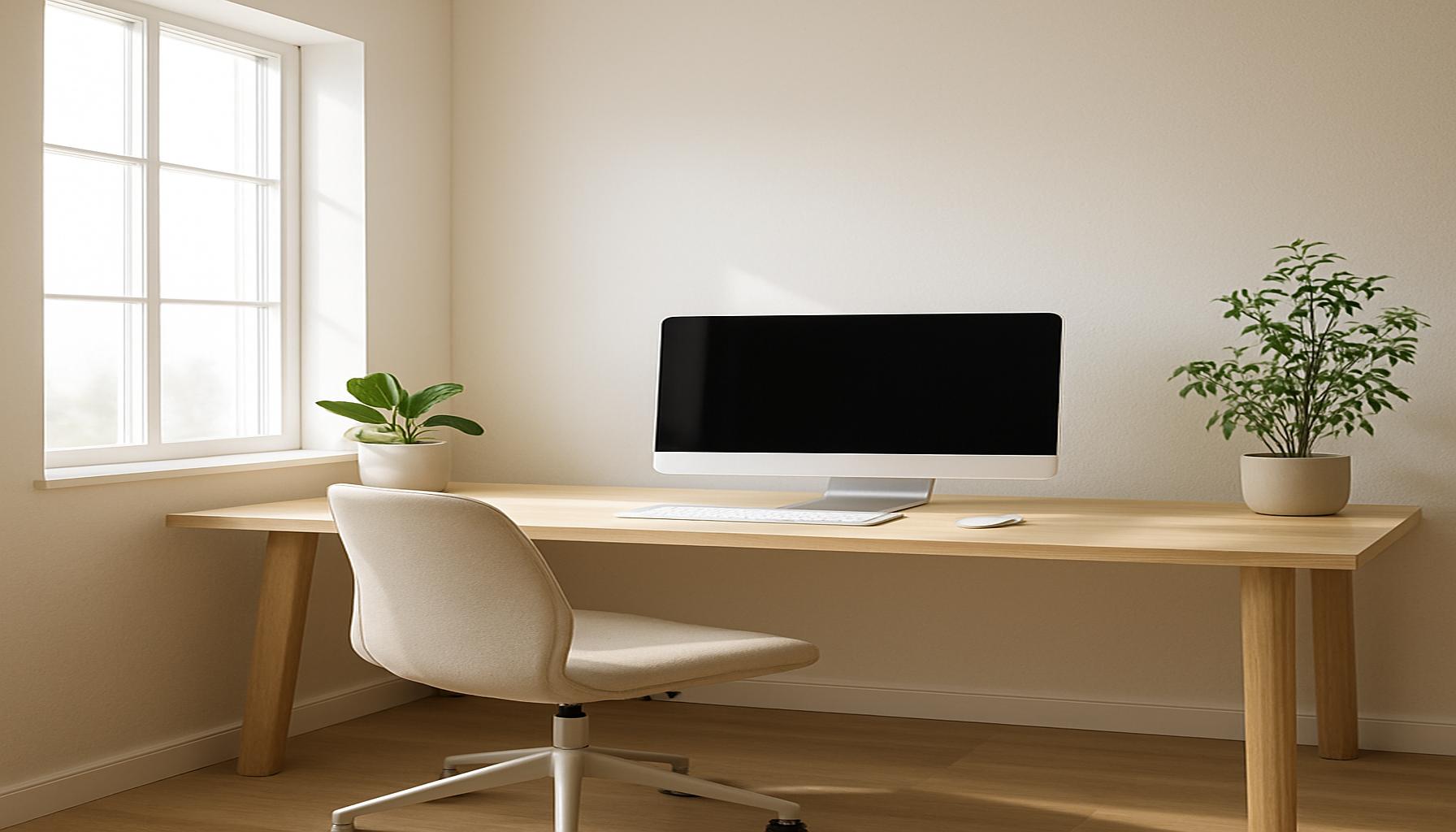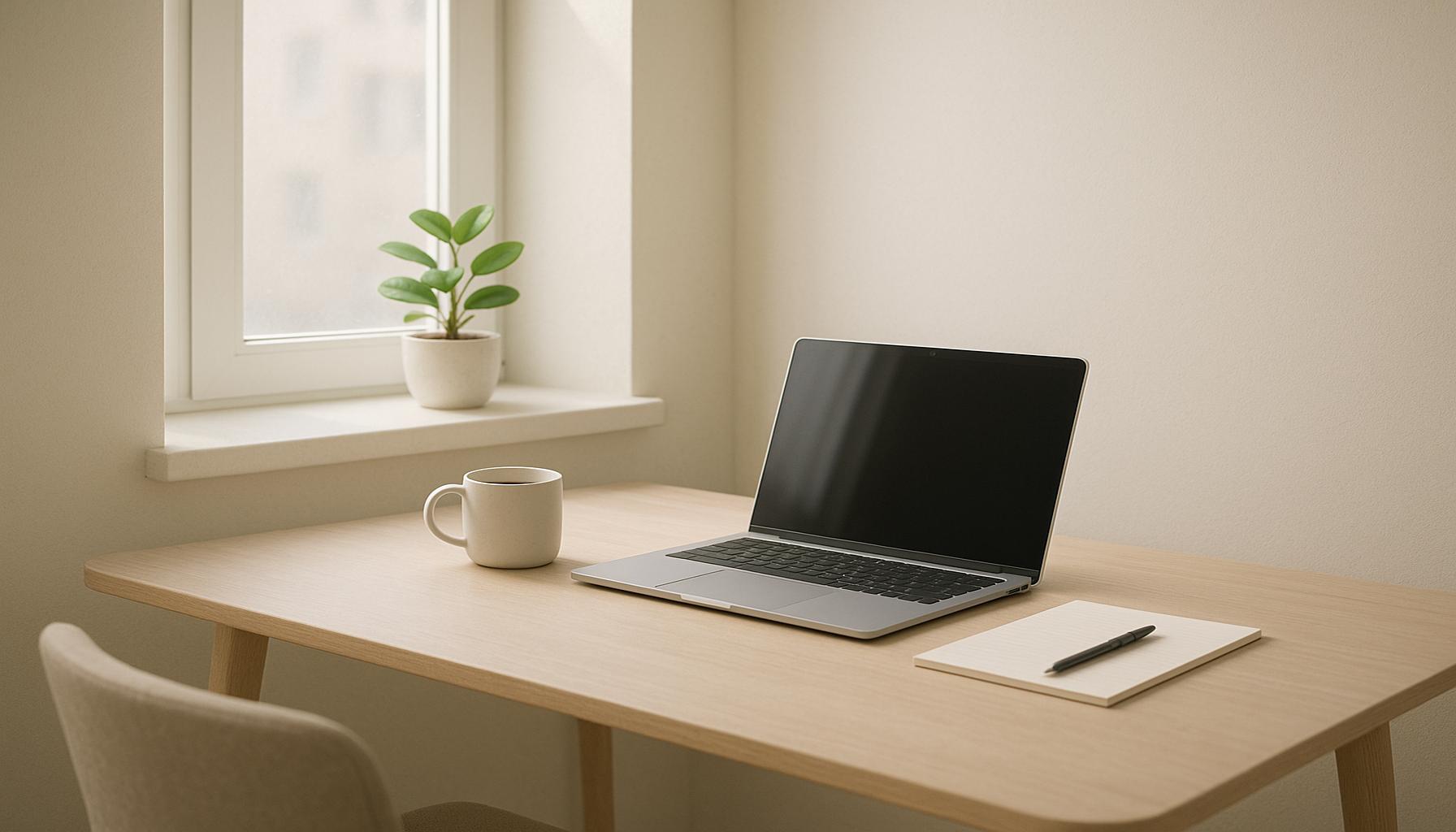Minimalist Personal Organization: Strategies to Eliminate Clutter and Increase Productivity

Embrace Minimalism for Enhanced Productivity
In today’s fast-paced world, clutter can weigh heavily on your mental space and daily productivity. Many individuals find themselves overwhelmed by their belongings, leaving them feeling disorganized and stressed. Exploring minimalist personal organization strategies can be a game changer, allowing you to reclaim that much-needed clarity.
Adopting minimalism can lead to numerous transformative benefits that significantly improve your overall well-being and productivity. To begin, one of the principal advantages is the reduction of distractions. In an environment filled with unnecessary items, it can be challenging to concentrate on essential tasks. Research shows that minimizing distractions can enhance focus, leading to better performance in both professional and personal realms.
Furthermore, a clearer environment fosters creativity. When your space is clutter-free, your mind has more room to think creatively without the weight of visual noise pulling your attention away from innovative ideas. For instance, many successful business leaders and artists, such as Steve Jobs and Marie Kondo, have championed tidiness as a conduit for inspiration and clarity.
Additionally, minimalism allows for more time spent on what truly matters. By simplifying your belongings and commitments, you gain time and mental energy to focus on relationships, hobbies, and self-care, which can often get sidelined in the chaos of daily life. Imagine the joy of dedicating an entire afternoon to your favorite book or spending quality time with family, rather than sorting through clutter!
Practical Strategies for Minimalism
To kickstart your journey towards a more organized life, here are a few effective strategies:

- Declutter regularly: Set aside time each month to evaluate your possessions. Aim to identify items that no longer serve a purpose or bring you joy. This regular assessment will prevent clutter from building up.
- Implement a one-in-one-out rule: For every new item you bring into your home, let go of one. This practice not only controls the influx of possessions but also encourages mindfulness about your purchases.
- Create designated spaces: Ensure every item has a home to prevent chaos. Label your storage spaces, and utilize containers or organizers to maintain order in shared areas, such as a home office or kitchen.
These tips can pave the way for a lifestyle characterized by efficiency and calmness. With determination and the right strategies, anyone can learn to eliminate clutter and boost their productivity significantly. As you embark on this minimalist journey, consider documenting your progress or sharing your experiences with others, creating a supportive community committed to enhancing productivity through simplicity. Embracing minimalism not only transforms your physical space but also revitalizes your mental landscape, allowing you to truly thrive in today’s bustling environment.
DISCOVER MORE: Click here to learn how to simplify your space
Transforming Your Environment: The Heart of Minimalism
At its core, minimalism revolves around creating an environment that encourages focus and productivity. When you adopt a mindset of simplicity, you begin to realize how much physical items influence your mental state. The clutter that fills your rooms can often translate to mental clutter, impeding your ability to think clearly and work efficiently. To unlock your full potential, it is imperative to cultivate an organized space that reflects your priorities and aspirations.
Moreover, understanding the psychological impact of clutter can significantly influence your approach to personal organization. Studies indicate that disorganized spaces can lead to increased stress and decreased motivation. A cluttered environment may activate a ‘fight or flight’ response, consuming your cognitive resources and leaving you feeling drained by the end of the day. By implementing minimalist strategies, you can mitigate these negative effects and promote a more productive mindset.
The Importance of Mindful Consumption
To begin decluttering, it’s essential to evaluate the items in your life critically. This process not only involves physical possessions but also your time and commitments. Consider the value of each item you own. Does it serve a specific purpose? Does it contribute to your overall happiness? Answering these questions can provide clarity on what to keep and what to discard. The practice of mindful consumption aligns perfectly with minimalism and emphasizes intentional acquisition.
- Prioritize needs over wants: Create a list of essential items that enhance your daily life. This list will provide a guideline when considering future purchases.
- Reflect on your values: Understand what truly matters to you—whether it’s family, career, or personal growth. Allow these values to guide your organization decisions.
- Establish a decluttering routine: Consistency is key. Designate a regular time to remove items that no longer serve you. Weekly or monthly check-ins can help maintain your organized space.
These strategies highlight the essence of mindful minimalism, where each decision regarding your possessions leads to a more organized life. Implementing these approaches may initially require some effort and adaptation, but the long-term benefits are undeniable. As you gradually let go of what you don’t need, the increased clarity can promote unmatched focus and enhance your productivity.
As you cultivate your minimalist environment, remain open to adjusting your strategies. The journey towards effective personal organization is a personal one, and each step you take should align with your unique lifestyle and goals. Embracing this pilgrimage towards minimalism can be liberating, providing you with the focus and energy to pursue what matters most in your life.
| Strategy | Advantages |
|---|---|
| Decluttering Routine | Establishing a routine helps create a habit of regularly removing non-essential items, resulting in a clearer space and mind. |
| Time-Blocking Method | This technique enhances productivity by allowing you to allocate specific time slots for tasks, minimizing distractions and promoting focus. |
The essence of minimalist personal organization lies in streamlined strategies that declutter not just our spaces, but also our minds. One effective approach is establishing a decluttering routine. By dedicating time regularly to reassess and remove non-essential items, individuals can maintain a refreshed environment that encourages creativity and reduces stress. Clearing away physical clutter often translates into mental clarity, fostering better decision-making skills and enhanced overall well-being.Another pivotal technique is the time-blocking method. By segmenting tasks into dedicated time slots, individuals can significantly improve their productivity. This practice limits interruptions and creates a structured work environment where focus reigns supreme. It enables users to dive deeply into their projects without the typical distraction of multitasking, which can lead to decreased efficiency and increased frustration. Experimenting with these strategies offers a doorway to a more organized, productive life, setting the stage for greater achievements.
DISCOVER MORE: Click here to enhance your productivity
Streamlining Your Time: The Role of Minimalism in Productivity
In the fast-paced world we inhabit, time can often feel like the most precious commodity. Minimalism extends beyond physical spaces into the realm of time management. By adopting minimalist principles, individuals can reclaim their schedules and reduce the overwhelming sense of urgency that often leads to burnout. Streamlining your time is about identifying tasks that align with your goals, liberating yourself from time-consuming obligations that distract from your true priorities.
The first step in this transformation is to perform a time audit. Track how you spend your day for a week, noting the time allocated to each task. This data will provide insights into unproductive habits and allow you to recognize activities that contribute little to your overall objectives. Once you identify these time-sinks, you can take proactive measures to eliminate or delegate them. For instance, consider leveraging technology for routine tasks—using apps to automate reminders or organizing tasks through digital planners can free up more of your valuable time.
Embracing the Power of ‘No’
A pivotal part of establishing a minimalist lifestyle involves learning to say ‘no’. Often, people feel obliged to partake in projects, commitments, and social engagements that drain their energy and deviate from their personal objectives. By asserting yourself and declining unnecessary requests, you can maintain a more streamlined schedule. This empowers you to devote your attention to what resonates with your values and furthers your goals.
- Establish clear boundaries: Communicate your availability to colleagues and friends. This helps set expectations and allows you to maintain control over your schedule.
- Practice selective engagement: Evaluate opportunities and choose those that align with your long-term aspirations. Focus on projects that spark joy and challenge you positively.
- Schedule ‘me time’: Allocate periods for relaxation and creativity. By recharging your mental batteries, you enhance your ability to focus on necessary tasks.
Consider adopting techniques such as the Pomodoro Technique, which encourages working in short bursts—typically 25 minutes—followed by brief breaks. This method not only minimizes procrastination but also creates consistent rhythms that can boost concentration and overall efficiency. Such approaches exemplify how structured minimalism can augment productivity, ensuring that each minute counts towards your goals.
Another powerful aspect of minimalism involves creating a prioritized task list. Distinguish between urgent tasks and those that contribute meaningfully to your long-term plans. Utilize platforms such as the Eisenhower Matrix, categorizing tasks into quadrants based on their urgency and importance. This visual representation helps clarify what should be your current focus, enabling you to approach daily responsibilities with intention.
As you venture deeper into the practice of minimalist personal organization, it’s crucial to remain flexible. Your strategies may need frequent adjustments to truly fit your evolving lifestyle and work dynamics. The goal is not merely to eliminate clutter but to create a rhythm that promotes clarity of thought and fosters productivity in a sustainable manner.
DISCOVER MORE: Click here for insights on structured living
Conclusion: Unlocking Potential through Minimalism
In a world increasingly filled with distractions and obligations, minimalist personal organization offers a transformative approach to reclaiming focus and enhancing productivity. By eliminating physical and mental clutter, individuals can create an environment that nurtures clarity. The strategies discussed, such as conducting a time audit, practicing the power of ‘no’, and embracing techniques like the Pomodoro Technique, provide actionable paths to streamline both tasks and time.
Importantly, the journey to minimalism isn’t merely about reducing what we have but also about amplifying what we choose to engage with. Embracing selectivity in commitments allows for deeper pursuits, aligning daily actions with overarching life goals. This conscious curation empowers individuals to pursue not just productivity but also meaning in their endeavors.
Moreover, the adaptability of minimalist strategies encourages ongoing evaluation and adjustment as life milestones evolve. The crucial takeaway is that minimalism is a mindset, one that cultivates sustainability in our efforts to push past the chaos toward a well-structured existence.
As you explore these principles further, consider engaging with resources, whether books, workshops, or online communities, that dive deeper into minimalist philosophies. This exploration can enrich your understanding, providing you with tools to optimize both your physical space and your time—elevating your productivity and ultimately enriching your quality of life.


